With winter temps coming, hypothermia can be fatal

It’s December. This time of year brings Christmas, New Year’s, bowl games, and a lot of parties. It also brings cold weather, and cold weather can kill. The Alabama Department of Public Health released a statement on Wednesday warning that hypothermia can lead to death. ADPH warned that the milder climate of Alabama in winter may mask the need to be aware of weather conditions. Hypothermia is a medical emergency that can lead to death. Hypothermia occurs when the body’s core temperature falls below 95 degrees F, just a few degrees less than the normal body temperature. When exposed to cold, human bodies begin to lose heat faster than it can be produced. According to provisional data for 2022 from ADPH’s Center for Health Statistics, there were 18 deaths in Alabama from hypothermia in 2022. That is an increase from the 10 deaths in 2021. To prevent hypothermia, stay warm, keep well informed and take extra precautions during times of extremely cold weather. Everyone should remember to lower the risks of cold-weather health problems by dressing in multiple layers to help retain body heat, limit time outdoors, and remove wet clothing immediately. This all makes sense to someone reading this in a house with the furnace on and the thermostat maintaining a minimum temperature of 68 degrees. Still, ADPH cautions that hypothermia makes people unable to think clearly or move well. This makes hypothermia especially dangerous, because a person may not know when it is occurring and then will not be able to do anything about it. According to the Centers for Disease Control and Prevention (CDC), victims of hypothermia are often: · Older adults with inadequate food, clothing or heating · Babies sleeping in cold bedrooms · People who remain outdoors for long periods—the unhoused, hikers, hunters and others · And People who drink alcohol or use illicit drugs. As the body ages, the ability to maintain a constant internal temperature decreases. Hypothermia risk is even greater when an older person has a chronic condition that affects the circulatory or neurologic systems, or the thyroid. When the core temperature falls, bodily functions shut down. Living quarters for older adults should be heated to at least 65 degrees F, they should wear suitable clothing, have plenty of warm blankets available, and eat nutritionally balanced food. In addition to advanced age, common risk factors for hypothermia are substance abuse and mental impairment. Certain commonly used drugs such as tranquilizers may contribute to the onset of hypothermia. Many deaths from hypothermia are complicated by alcohol consumption, which can lead to dehydration and impaired judgment. According to the CDC the symptoms of hypothermia include: · Shivering · Exhaustion or feeling very tired · Confusion · Fumbling hands · Memory loss · Slurred speech · Drowsiness In babies the symptoms are: · Bright red, cold skin · Very low energy Immediate medical attention is needed if a person’s temperature falls below 95 degrees F. If unable to get medical help right away, try to warm the person up. · Get the person into a warm room or shelter. · Remove any wet clothing the person is wearing. · Warm the center of the person’s body—chest, neck, head, and groin—using an electric blanket, if available. You can also use skin-to-skin contact under loose, dry layers of blankets, clothing, towels, or sheets. · Warm drinks can help increase body temperature, but do not give alcoholic drinks. Do not try to give beverages to an unconscious person. · After body temperature has increased, keep the person dry and wrap their body, including their head and neck, in a warm blanket. · Get the person proper medical attention as soon as possible. A person with severe hypothermia may be unconscious and may not seem to have a pulse or to be breathing. If this happens, handle the person gently, and get emergency assistance immediately. Perform CPR, even if the person appears dead. CPR should continue until the person responds or medical aid becomes available. Keep warming the person while performing CPR. In some cases, hypothermia victims who appear to have died can be successfully resuscitated. On extremely cold nights check on elderly relatives and neighbors, make sure that the children are inside and not outside playing, and bring the pets inside. To connect with the author of this story or to comment, email brandonmreporter@gmail.com.
Alabama’s overall infant mortality rate dropped – Black infant mortality rose; White infant mortality dropped

The Alabama Department of Public Health (ADPH) announced Thursday that the 2022 Alabama infant mortality rate was 6.7 deaths per 1,000 live births. That is a substantial decrease from the 7.6 rate in 2021. Despite this improvement, Alabama’s infant mortality rate remains higher than the provisional U.S. rate of 5.6 for 2022. While Alabama’s rate improved, the national rate trended upward for the first time in 20 years. The substantial racial disparities in infant mortality got much worse in 2022, though. Black mothers have the highest infant mortality rate in the state. The rate increased to 12.4 in 2022. That is up from 12.1 in 2021. White infant mortality rate, however, improved, dropping from 5.8 to 4.3 for White mothers. “I am pleased that both the 2022 infant mortality rate and the 3-year infant mortality rate of 7.1 for 2020-2022 have decreased to the lowest rate ever,” said Alabama State Public Health Officer Dr. Scott Harris. “Births with maternal smoking also declined to the lowest ever recorded. The enduring disparity between birth outcomes for Black and white mothers, however, is disturbing. Despite advances in healthcare, the Black infant mortality rate is consistently twice the rate for white mothers. We must address the many factors that contribute to infant mortality, including poverty, educational levels, and access to medical care.” Dr. Max Rogers is a State Committee of Public Health member. “We are heartened to learn that Alabama’s infant mortality rate declined in 2022,” said Dr. Rogers. If this positive trend is to continue, we must follow evidence-based practices that have been shown to save lives, such as providing access to timely, adequate prenatal care.” Dr. Eli Brown is another State Committee of Public Health member. “As an obstetrician/gynecologist who focuses on women’s health and delivering babies, I am troubled that a major predictor of whether a mother will deliver a baby preterm is her race. Improving outcomes for Black infants, along with infants of all races and ethnicities, is imperative,” said Dr. Brown. “Births to mothers in hospitals which have a higher volume of deliveries improve the chance of healthy survival for high-risk infants.” There were 58,162 births in Alabama in 2022, up slightly from 58,040 in 2021. Just 391 babies died in 2022. This is down from 443 infant deaths in 2021. The percentage of low-weight births decreased very slightly from 10.5 to 10.4. The percentage of births at less than 37 weeks of gestation also decreased from 13.1 to 12.8%. Low birth weight is defined as birth weight under 2,500 grams. Providing adequate prenatal care remains a problem. The percentage of births with adequate prenatal care decreased from 74.8 percent to 74.4 percent, and the percentage of births with no prenatal care increased from 2.2 percent to 2.3 percent in 2022. For births with no prenatal care, 60.0 percent were to white mothers, 21.2 percent were to Black mothers, and 18.8 were to mothers of other races. Medicaid was the payment source for 77.3 percent of births without prenatal care, and the majority of births to mothers with no prenatal care, 54.3 percent, were to mothers aged 20 to 29. Teenagers giving birth continue to decline; however, the percentage of births to white teen mothers increased from 5.4 to 5.5 percent. There was a decrease in births to Black teen mothers in 2022 from 8.5 to 7.2%. The percentage of births with maternal smoking was 4.8 in 2022. That is a substantial decrease from 6.1 in 2021. That is the lowest percentage ever recorded in Alabama. To connect with the author of this story or to comment, email brandonmreporter@gmail.com.
Dr. Diane Counce presents experience with long COVID
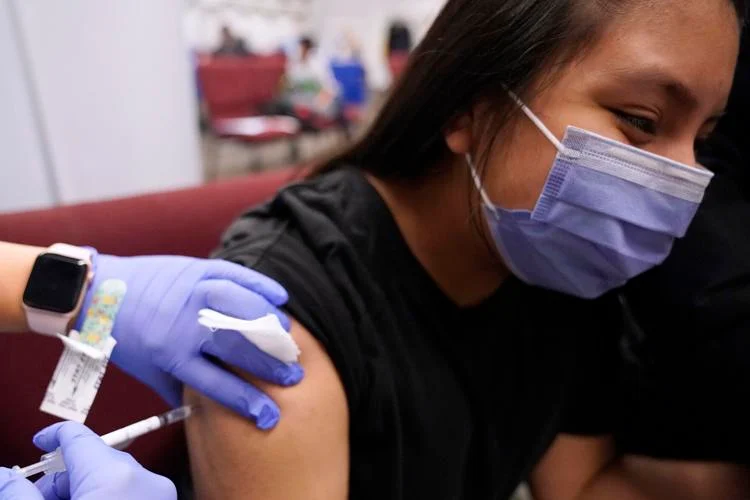
On Tuesday, Dr. Diane Counce spoke at the Mountain Brook Public Library to the Over the Mountain Chapter of Alabama Eagle Forum about her experiences treating patients suffering from long COVID. Counce is a neurologist who practices in the Birmingham area. Dr. Counce said that she treats people who had a bout of COVID-19 and continued to show symptoms weeks and even months after the infection. She also treats people who believe their symptoms are due to the COVID-19 vaccine. “Unfortunately, we see a lot of neurological problems with both the virus and the vaccine,” Dr. Counce said. Counce explained that the spike protein in COVID-19 interacts with the ACE-2 receptors found in over 72 tissues in the body. It is a mRNA vaccine. With long COVID, “one in five or one in seven are still having symptoms 28 days later,” Counce said. “203 symptoms have been documented. The average long COVID patient has 56 symptoms over nine organ symptoms. 86% would relapse when physically or psychologically stressed.” “The Science Journal confirmed that vaccines are linked to autoimmune disorders,” Counce stated. Counce said that symptoms of long COVID can also include blood clotting and heart myopathy. “The German Ministry of Health has said that long vaccine injury is a real issue,” Counce said. “People are spending lots of money treating this,” Counce said. “Insurance won’t pay for it because they don’t believe in it.” “Pfizer, as of February 2021, knew,” Counce said, citing Pfizer’s own data that has since been made public. “Cardiac issues occur about 40 days after the vaccine,” Counce said. “Neurological symptoms can turn up 100 days later. One hundred ninety-five days is about the average for neurological symptoms to occur.” Counce explained that the spike protein can easily cross the blood-brain barrier through the bone marrow. Symptoms include malaise, lethargy, microclotting, and GI issues. Treatments include ivermectin, intermittent fasting, N-acetyl cysteine, Vitamin C, Vitamin D, MagTen, and a low histamine diet. Counce said that for patients with clotting issues, she has tried Eliquis + Plavix + aspirin, natokinase, serrapeptase, lumbrokinase, neprionol, and vascyzyme. Dr. Counce recommended a clean diet: no seed oil, no canola, and no processed foods. “On the length of time of treatment, we don’t know,” Counce said. There have been cases where the patients relapsed after treatments stopped. Counce said that common neurological symptoms of long-term COVID or vaccine injury include brain fog, Bell’s palsy, and cognitive impairment. “These people are showing up at my clinic that are as though they have had Parkinson’s for five years, and it has just shown up,” Counce said, Counce said that long-term COVID can bring on the onset of muscular sclerosis. Counce said that scans of some of her patient’s brains show a depletion of the grey matter and/or diffuse grey matter atrophy. Long Covid can also worsen the condition of dementia patients. Dr. Counce recommended Dr. Jordan Vaughn at Med-Health 280 and Dr. Stewart Tankersley if you have long COVID or may be suffering from a vaccine injury. Dr. Counce’s views are a minority opinion within the medical establishment. The Centers for Disease Control and Prevention (CDC) and the Alabama Department of Public Health still recommend that every person six months of age and older receive the COVID-19 vaccine and receive booster shots twice yearly. “The Advisory Committee of Immunization Practices has approved updated 2023-24 COVID-19 vaccines for all Americans 6 months and older who have not received a vaccine in the past two months,” ADPH wrote in a recent press release. “Vaccination remains the best protection against COVID-19-related hospitalization and death. Vaccination also reduces the chance of suffering the effects of Long COVID, which can develop during or following acute infection and last for an extended time. The updated mRNA vaccines are produced by Moderna and Pfizer-BioNTech. An updated Novavax vaccine has been authorized and should be available soon.” There are presently 14,863 known active COVID-19 cases in the state of Alabama. Since 2020, 21,138 Alabamians have died from COVID-19. 1,659,936 people in Alabama have contracted COVID-19. The actual number is likely higher as many people either had mild symptoms or suffered through it at home without seeking medical treatment. To connect with the author of this story or to comment, email brandonmreporter@gmail.com.
Raccoon in Clay County tests positive for rabies
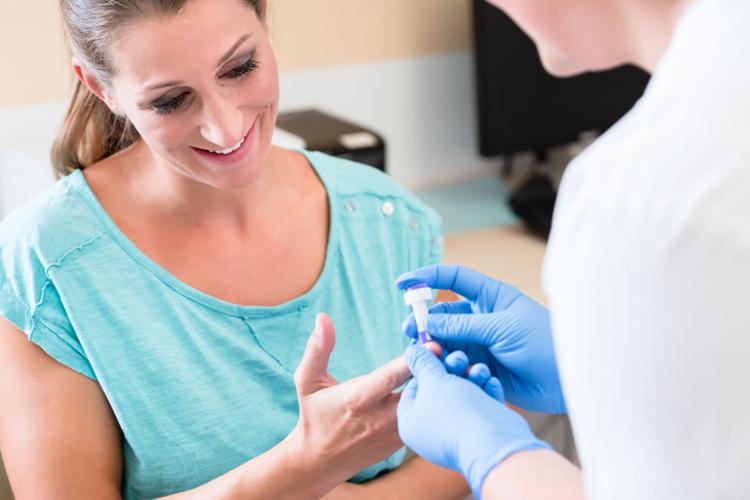
The Alabama Department of Public Health (ADPH) reports that a raccoon in the city of Ashland, Alabama, in Clay County, has tested positive for rabies. A fox was found in the same area earlier this month. Authorities say that the two cases are probably related. ADPH said in a statement that both animals have posed a significant risk to pets. Samples have been taken from both animals, and additional testing is underway. The ADPH is working with the Clay County rabies officer to develop a vaccination strategy for the animals in the area. The plan will be announced soon. There are two major strains of rabies: a raccoon strain and a bat strain. Both are found in Alabama. Wildlife, especially raccoons, pose a risk of rabies to other animals and humans. The best protection is to keep your animal current on rabies vaccines. ADPH is reminding pet owners to keep their animals up to date on rabies vaccines. State Public Health Veterinarian Dr. Dee Jones said, “Vaccinating your animals against rabies is the best way to keep your pets protected from the deadly virus. Animal vaccinations also help protect people. People are often exposed when the animal first becomes sick and before rabies can be confirmed.” Fifteen people in Russell and Lee County, as well as pets, were recently exposed to rabies by a rabid cat this summer. A fox in Houston County tested positive for rabies in April. A raccoon in Houston County tested positive for rabies in February. Alabama law requires that all dogs, cats, and ferrets be vaccinated at three months of age and annually unless they receive a three-year rabies vaccine. The first rabies vaccination is only good for one year, regardless of which vaccine a pet gets. The best way to combat rabies is prevention: · Taking precautions with wildlife. · Make sure their pets are current on rabies vaccinations. · Always report any animal bite or other exposures to their medical provider and the ADPH. · Do not let pets run loose. Keep them in the house or in a pen or enclosure. · Do not leave uneaten pet food or scraps near your residence. · Do not illegally feed or keep wildlife as pets. · Do not go near wildlife or domestic animals that are acting in a strange or unusual manner. · Caution children not to go near any stray or wild animal, regardless of its behavior. Rabies is fatal for humans and pets alike. There is no treatment. To connect with the author of this story or to comment, email brandonmreporter@gmail.com.
ADPH urges Alabamians to protect themselves from mosquito bites
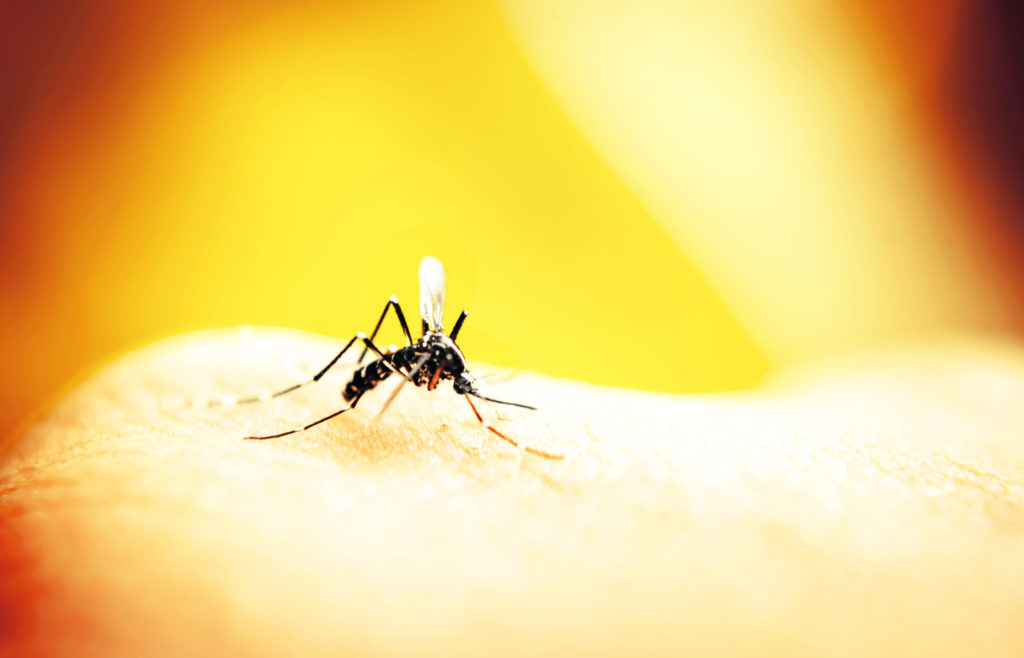
The Alabama Department of Public Health (ADPH) issued a statement reminding the public that mosquitoes carry viruses that can cause serious illness or death. The most dangerous times of day for mosquito bites are dusk and dawn. One of the viruses carried by certain types of mosquitoes causes Eastern Equine Encephalitis (EEE). EEE is rare, but it is present in Alabama. The EEE virus can cause severe illness and death. There is no vaccine for EEE, and no specific treatments are available for this mosquito-spread illness. Two cases of EEE in humans have already been reported in Baldwin County this season, including one where a seven-year-old little girl died in Spanish Fort. In addition to EEE, other arboviruses that occur in Alabama include West Nile virus, St. Louis encephalitis virus, and La Crosse encephalitis virus. A case of West Nile Virus was recently identified in Mobile County. ADPH stays in contact with local community leaders regarding mosquito control and education efforts. A larvicide is an insecticide used to control mosquitoes indoors and outdoors around homes. Larvicides work by killing mosquito larvae before they can grow into adults. When used according to product label instructions, larvicides do not harm people, pets, or the environment. Municipalities can control mosquitoes through spraying and placement of larvicide briquettes in areas with standing water. ADPH has created a new flyer to educate the public about prevention and how to protect yourself and your family. This flyer has been placed on the ADPH website and distributed to local boards of education. ADPH is asking local hospitals and medical offices to report diseases spread by mosquitoes. Mosquito repellents are particularly needed at the dawn and dusk hours. Municipal mosquito control spraying is needed to prevent new hatches. To avoid being bitten by mosquitos: · Use insect repellents. · Wear long sleeves and long pants whenever possible · Wear loose-fitting, light-colored clothes · Treat clothing with repellents · Use air conditioning or screens on windows and doors. Mosquito Control Outside Your HomeMosquitoes tend to lay eggs near standing water. · Empty and scrub, turn over, cover, or throw out any items that hold water. These include tires, buckets, planters, toys, pools, birdbaths, or trash containers. · Tightly cover buckets, cisterns, and rain barrels. · If a container has no lid, cover it with wire mesh with holes. Holes need to be smaller than an adult mosquito. · If you have a septic tank, repair cracks or gaps. · Use larvicides if a body of water is large, cannot be covered or dumped out, and if water will not be used for drinking Go to the ADPH mosquito-borne diseases webpage and the CDC’s page on mosquito-borne illnesses for more information. To connect with the author of this story or to comment, email brandonmreporter@gmail.com.
Alabama WIC Program seeks public comment about 2024 State Plan

On Friday, the Special Supplemental Nutrition Program for Women, Infants, and Children (WIC) in the Alabama Department of Public Health (ADPH) announced it is seeking public comment on the plan and what WIC could do better in 2024. WIC provides nutrition education and supplemental foods and serves pregnant, postpartum, and breastfeeding women, infants, and children up to age five whose family income is up to 185 percent of the federal poverty level. Special emphasis is placed on the participation of infants, children, and high-risk pregnant women. The federal WIC Program regulations require that each state agency establish a procedure under which members of the general public are provided an opportunity to comment on the development of the state agency plan for the coming year. The Alabama WIC Program’s 2024 State Plan of Program Operations may be reviewed online between September 1- 15, 2023. Members of the public are invited to submit their written comments via email by September 15, 2023. Comments can also be mailed to: Alabama Department of Public Health WIC Program, Attention Allison Hatchett The RSA Tower, Suite 1300 201 Monroe St. P.O. Box 303017 Montgomery, Ala. 36130-3017 Thursday was the 59th anniversary of the Supplemental Nutritional Assistant Program (SNAP) program. “For 59 years, SNAP has served as the first line of defense against hunger and food insecurity for low-income children and families,” Congresswoman Terri Sewell (D-AL07) said on Twitter. “I will always fight to preserve and protect SNAP benefits for those who rely on them!” Both SNAP and WIC are federal nutrition assistance programs for low-income families managed by the states. Both programs have income requirements, but WIC also has categorical requirements that limit who can participate. SNAP gives qualifying participants an Electronic Benefits Transfer (EBT) card, which works like a debit card and automatically loads a certain dollar amount onto it each month. The state determines how much benefit to give based on household size and income. SNAP can be used to purchase most foods, including fruits and vegetables, meat, dairy products, bread, cereal, and snacks. SNAP can also be used to buy seeds or plants that will grow into food. SNAP cannot be used for alcohol, tobacco, supplements, most live animals, or pet food. WIC participants receive a WIC card similar to a SNAP EBT card. However, instead of providing a monthly dollar limit participants can spend up to, it authorizes them to purchase certain foods the program has approved. These can include fruits and vegetables, meats, cereals, dairy products, and infant formula, among other things. Benefits expire on the last day of the month. In addition to this direct food assistance, WIC can also connect people with nutrition education and breastfeeding support. These services can help families squeeze the most value out of their WIC benefits. Generally, those who qualify for SNAP have gross incomes less than 130% of the poverty line, and net income may not be more than 100% of the poverty line. There are exceptions for the elderly or disabled. People may also be deemed categorically eligible if they qualify for another government assistance program, like Temporary Assistance for Needy Families (TANF) or Supplemental Security Income (SSI). Generally, you cannot have more than $2,750 in countable resources or $4,250 if at least one household member is over 60 or disabled to qualify for SNAP. Your home does not count against SNAP eligibility. WIC is open to pregnant, postpartum, and breastfeeding women and households with infants or children under five. Eligibility lasts only as long as the household meets at least one of these criteria. To qualify for WIC, you must have an income equal to or less than 185% of the poverty line. You may also qualify automatically if you’re eligible for SNAP, Medicaid, or TANF. To connect with the author of this story or to comment, email brandonmreporter@gmail.com.
Alabama Public Health warns everyone to take extra precautions to prevent heat-related illnesses and deaths

Temperatures are expected to be in the 100s across large parts of Alabama this week. While 93 degrees is hot, 101 degrees is much more dangerous. Birmingham meteorologist James Spann predicts it will be the hottest week of the Summer. With temperatures in the triple digits and high heat indices expected for this week, the Alabama Department of Public Health (ADPH) advises the public to be alert to the warning signs of heat illnesses. Heat-related illnesses occur when the body is exposed to high temperatures and high humidity. According to the Centers for Disease Control and Prevention (CDC), people at the highest risk of heat illnesses include people ages 65 and older, children younger than 2, and people with chronic diseases or mental illnesses. Others who are disproportionately affected include athletes, outdoor workers, and people in low-income households. Anyone exposed to high temperatures or extreme heat, however, can experience symptoms when the body’s temperature control system is overloaded. The ADPH and the CDC are urging the public to stay cool, hydrated, and informed. The most common heat-related illnesses are as follows: · Heat cramps · Heat exhaustion · Heatstroke Heat cramps – include muscle pains or spasms (abdomen, arms, or legs), profuse sweat, and high salt concentration in the sweat. Heat exhaustion– is associated with heavy sweating, paleness, muscle cramps, tiredness, weakness, dizziness, headache, nausea, or vomiting, and fainting. Other possible symptoms may include cool and moist skin, fast and weak pulse rate, fast and shallow breathing, or irritability. Older adults, those with high blood pressure, and those working or exercising in a hot environment are prone to heat exhaustion. If heat exhaustion is not treated, it may progress to heatstroke. Heatstroke or sunstroke – the most severe heat-related illness, a life-threatening problem, may occur when the body is unable to control its temperature. Body temperature may rise to 106 degrees F or higher within 10 -15 minutes. Signs include an extremely high body temperature, red, hot, and dry or moist skin, rapid, strong pulse, throbbing headache, dizziness, nausea, dehydration, combativeness or confusion, and unconsciousness. Heat stroke is a medical emergency, and even with immediate treatment, it can be life-threatening or cause serious long-term problems. Recommendations are that people drink plenty of fluids. Avoid excess alcohol or caffeinated beverages. To prevent dehydration, stay in an air-conditioned room, keep out of the sun by seeking shelter, wear a wide-brimmed hat, light-colored and loose-fitting clothing, use sunscreen of SPF 15 or higher, take cool showers or baths, and reduce or eliminate strenuous activities during the hottest times of the day. NEVER leave people or pets in a parked vehicle. Persons with heart disease, diabetes, obesity, poor circulation, or previous stroke problems, people of older and younger ages, and those taking certain medications are at greater risk of becoming ill in hot weather. To connect with the author of this story or to comment, email brandonmreporter@gmail.com.
ADPH recommends tuberculosis testing for people associated with poultry plants in North Alabama after outbreak reported
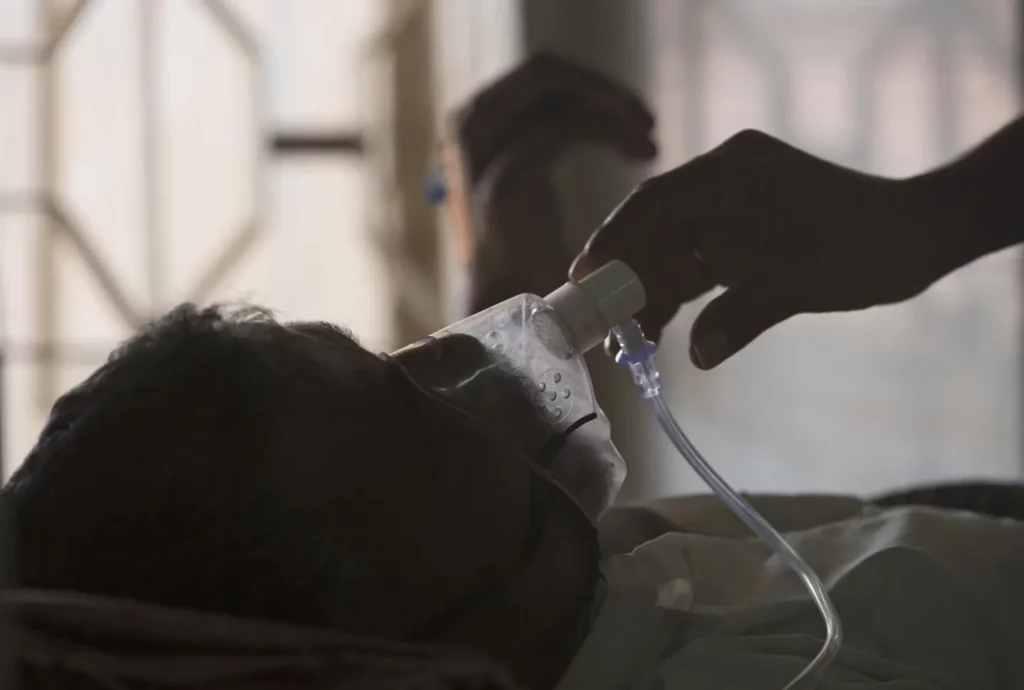
Tuberculosis, once one of the most dreaded diseases in North America in the nineteenth and early twentieth centuries, is making a comeback with the recent outbreak in North Alabama. On Monday, the Alabama Department of Public Health announced that people who are working or who have worked with the poultry industry in Colbert, Franklin, Lawrence, or Lauderdale counties from June 2022 to the present are asked to be screened for tuberculosis (TB). Tuberculosis is a type of bacteria that is usually spread from one infected person’s lungs to another’s through activities such as talking or coughing. TB is not transmitted in food. People who are infected with TB can be very sick or may have no symptoms. Where TB used to be debilitating, today it is treated successfully using antibiotics and is almost always cured. People infected with TB can also be offered preventive treatment. Over this time period, seven cases of confirmed or suspected TB disease have been identified in individuals who have worked in one or more poultry plants. As people who work in these plants are frequently in close contact with one another, the Alabama Department of Public Health (ADPH) cautions that these individuals may have been or currently be at risk for contracting TB. As with any identified cases of TB in the state, ADPH is implementing precautionary testing, investigation, and control measures. Anyone of any age can get TB, and the cases in this outbreak have not been limited to any individual racial or ethnic group. Testing is done by a blood test and will be available at county health departments in Lauderdale, Colbert, Lawrence, and Franklin Counties on the following days and locations from 9 a.m. until 4 p.m. At the Lauderdale County Health Department, on both Monday, August 7, and Wednesday, August 9. At the Colbert County Health Department on Thursday, August 10. At the Lawrence County Health Department on Monday, August 14. At the Franklin County Health Department on Thursday, August 17, 2023. For each eligible individual who completes the testing, a $20 gift card will be offered. For more information, contact the local health department. TB is a dangerous, contagious, airborne disease, but it is treatable and preventable. Persons who have been in close contact with suspect cases will be rapidly assessed, and appropriate preventive measures will be taken. Addresses and telephone numbers of these county health departments are as follows: Colbert County Health Department 1000 S. Jackson Highway, Sheffield, AL 35660 (256) 383-1231 Franklin County Health Department 801 County Road 48, Russellville, AL 35653 (256) 332-2700 Lauderdale County Health Department 4112 Chisholm Road, Florence, AL 35630 (256) 764-7453 Lawrence County Health Department 13299 Alabama Highway 157, Moulton, AL 35650 (256) 974-1141 TB symptoms can get significantly worse over time if untreated, and you can spread it to others. If you may have been exposed to TB, please get tested as soon as possible. To connect with the author of this story or to comment, email brandonmreporter@gmail.com.
Alabama Department of Public Health issues fish consumption advisories

On Wednesday, the Alabama Department of Public Health (ADPH) issued its annual updates to fish consumption advisories across the state. These warnings are based on data collected the preceding fall by the Alabama Department of Environmental Management (ADEM). ADEM, the Tennessee Valley Authority, and the Alabama Department of Conservation and Natural Resources collected samples of specific fish species for analysis from various waterbodies throughout the state during the fall of 2022. Authorities collected 492 samples from 40 collection stations in Alabama. ADPH then assessed the analytical results to determine whether any of the tested contaminants in the fish may give rise to potential human health effects. Fish consumption advisories are issued for specific waterbodies and specific species taken from those areas. In reservoirs, advisories apply to waters as far as a boat can be taken upstream in a tributary, that is, to full pool elevations. Most contaminants found in wild fish in Alabama are of little concern if consumed in one meal once a year. Consuming multiple meals of contaminated fish increases the risk as the contaminant can begin to build up in the body leading to possible health ramifications. For this reason, the newly issued advisories will be represented as the safe number of meals of that species of fish that can be eaten in a given period, such as meals per week or meals per month. In the worst cases of fish contamination, ADPH advises that people not eat any of that species in that body of water. For these advisories, a meal consists of 6 ounces of cooked fish or 8 ounces of raw fish. The advice in this release and complete listings of the posted fish consumption advisories are offered as guidance to individuals who wish to eat fish they catch from various waterbodies throughout the state. ADPH reminds Alabamians that there are no regulations banning the consumption of any fish caught within the state. There is also no risk of an acute toxic episode from consuming any fish containing the contaminants for which the state has conducted analyses. A fish consumption advisory can be issued for one or more specific fish species within a body of water. In the worst-case scenario, an advisory can be extended to include all fish species within that body of water. ADPH issued new and updated consumption advisories issued for the 34 bodies of water in Alabama. These can be found on the ADPH website. According to the Food and Drug Administration, moderate scientific evidence shows that eating patterns relatively higher in fish but also in other foods, including vegetables, fruits, legumes, whole grains, low- or non-fat dairy, lean meats and poultry, nuts, and unsaturated vegetable oils, and lower in red and processed meats, sugar-sweetened foods and beverages, and refined grains are associated with promotion of bone health – decreases the risk for hip fractures; decreases in the risk of becoming overweight or obese, and decreases in the risk for colon and rectal cancers. The Dietary Guidelines for Americans recommends eating fish as part of a healthy diet. The Dietary Guidelines for Americans recommends at least 8 ounces of seafood (less for children§) per week based on a 2,000-calorie diet. Those who are pregnant or breastfeeding are advised to consume between 8 and 12 ounces per week of a variety of seafood from choices that are lower in mercury. Wild-caught fish typically have a better flavor, less fat, more nutrients, and fewer contaminants than farm-raised fish. By catching the fish yourself, you can make sure that you eat the fish at peak freshness. Harvesting fish out of Alabama’s lakes, streams, rivers, and bay also can be effective at reducing grocery bills. Fishermen can mitigate most possible health risks by consuming multiple species of fish, fishing from multiple bodies of water, and following the ADPH fish consumption advisories. To connect with the author of this story or to comment, email brandonmreporter@gmail.com.
ADPH seeks proposals for programs to reduce sexual risk in middle and high school-age youth

The Alabama Department of Public Health (ADPH) announced two separate requests for proposals (RFP) for funding from youth-serving community organizations and other entities to provide evidence-based programs to youth within the counties of Bullock, Choctaw, Clay, Cleburne, Crenshaw, Fayette, Greene, Hale, Lamar, Lowndes, Macon, Marengo, Mobile, Montgomery, Pickens, Washington, and Wilcox Counties. The ADPH Adolescent Pregnancy Prevention Branch is soliciting proposals as follows: The Alabama Sexual Risk Avoidance Education RFP seeks programs that promote positive youth development, including leading youth in developing and navigating healthy relationships and making decisions that result in reduced teen pregnancy and sexually transmitted infections, including HIV. Proposals for this proposed contract should focus on middle school youth in grades 6-8. The Alabama Personal Responsibility Education Program RFP seeks programs that educate adolescents on abstinence and contraception to prevent unplanned pregnancies and sexually transmitted infections, including HIV, among youth aged 10-19 by increasing condom or contraception use for sexually active youth. Proposals should focus on high-risk, high school-aged youth. For both proposals, priority will be given to applicants serving populations at most risk, such as, but not limited to the following: youth who are in foster care, including group homes or summer camps; youth in juvenile detention programs; Native American youth; homeless and runaway youth; parenting youth; youth who identify as lesbian, gay, bisexual, transgender and questioning; and parent education for those youth involved in these programs. The settings for implementation of these programs will be schools and community-based organizations. Eligible applicants are all public or private non-profit organizations, government agencies, faith-based organizations, colleges, and universities who 1) are legally authorized to conduct business within the state of Alabama; 2) are in a position to operate on a cost-reimbursement basis; 3) become an Alabama registered vendor prior to billing for services; and 4) meet the terms and conditions of the RFP. Individuals not operating within an established organization, agency, business, or other entity are not eligible to apply for these grant opportunities. To connect with the author of this story or to comment, email brandonmreporter@gmail.com.
COVID-19 public health emergency will expire on Thursday
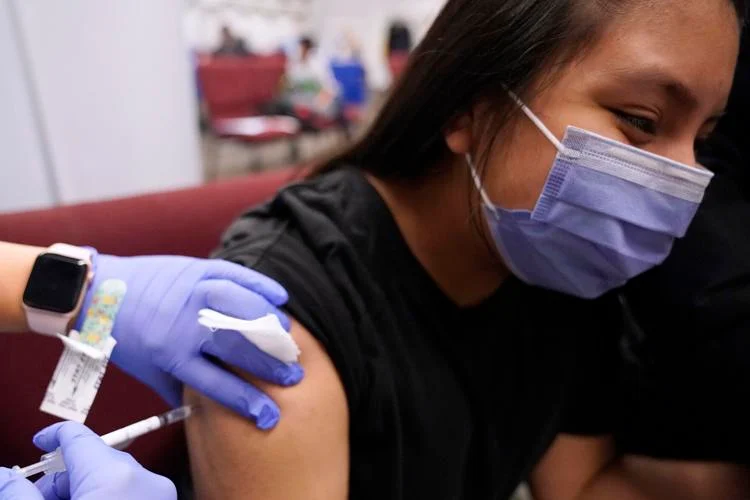
The Alabama Department of Public Health (ADPH) announced on Tuesday that the federally declared public health emergency for COVID-19 will expire on Thursday. Case numbers, hospitalizations, and deaths from COVID-19 are significantly lower now than during surges of the virus. ADPH will continue providing COVID-19 testing and vaccines for uninsured/underinsured people at the local county health departments even after the public health emergency ends. Even though the emergency is no longer in effect, COVID-19 remains a clear and present danger. “Although the COVID-19 pandemic is entering a new phase, the disease is still causing suffering and death in Alabama,” State Health Officer Dr. Scott Harris said. “ADPH is committed to monitoring the effects of this virus in Alabama and will continue to provide data that is accurate and actionable.” For the past three years, ADPH has had access to a large amount of COVID-19 data, some of which had been required to be submitted to the federal government. As these requirements transition, COVID-19 will continue to be reportable in Alabama, but some data will no longer be available. The current COVID-19 dashboards will be modified to use the available data and to better align with data from the Centers for Disease Control and Prevention (CDC). The current Alabama COVID-19 dashboards will update for a final time this week and be available for archive purposes for an unspecified amount of time. ADPH will continue to publish hospital admission data and COVID-19 death data which will be updated, but its reporting frequency will change. Vaccine administration reporting will not be reported as ADPH will no longer receive data from vaccine providers. ADPH continues to recommend the Bivalent COVID-19 Vaccines. The Centers for Disease Control and Prevention (CDC) has simplified its COVID-19 vaccine recommendations. Among the recommendations are that adults ages 65 and older and immunocompromised adults can receive a second dose of the updated vaccine. The CDC recommends that children ages six and older and adults receive an updated bivalent mRNA COVID-19 vaccine, regardless of whether they previously completed their (monovalent) primary series. Alternatives to mRNA COVID-19 vaccines remain available for people who cannot or will not receive an mRNA vaccine. The federal supply of COVID-19 vaccine will be available at no charge until the current supply is exhausted. After this supply of COVID-19 vaccine has been depleted, the vaccine will be sold commercially. People with public or private insurance will continue to be able to access authorized COVID-19 vaccines. For the uninsured, the federal government has announced it will fund a program to keep COVID-19 vaccines free after the vaccines move to the private market. A new partnership will cover the administrative costs of giving doses of vaccines at pharmacy chains and county health departments to uninsured people. Some doctors remain skeptical of the effectiveness and safety of the COVID-19 vaccines, which use experimental mRNA technology. The end of the public health emergency also means there will be changes in the availability of free COVID-19 tests. People covered by Medicaid can access free at-home tests through September 2024. The ADPH will continue to monitor COVID-19 as it regularly monitors other respiratory diseases and will respond to any future surges or developments. COVID-19 is caused by the SARS-CoV-2 virus – a type of coronavirus. 1,162,474 Americans have died, including 21,137 Alabamians, in the COVID-19 global pandemic. 107 million Americans contracted the virus despite efforts to limit the spread of the virus. To connect with the author of this story or to comment, email brandonmreporter@gmail.com.
Alabama Department of Public Health launches Operation Wipe Out Cervical Cancer initiative

On Monday, the Alabama Department of Public Health announced its new initiative to dramatically reduce the prevalence of cervical cancer in the state. Most cervical cancers are due to a venereal virus. Human papillomavirus (HPV) is the most common sexually transmitted disease (STD) in the United States. HPV vaccines can prevent some of the health effects caused by HPV, including cervical cancer. HPV is a different virus than HIV and HSV (herpes). Alabama ranks third in the nation in the incidence and deaths from cervical cancer. To address this serious public health problem, primary care providers and community leaders from throughout the state have convened and developed a statewide action plan they hope will eliminate cervical cancer in Alabama by 2033. The launch of “Operation Wipe Out Cervical Cancer Alabama” was announced at a news conference on Friday. Nancy Wright is the Director of the ADPH Cancer Prevention and Control Division. “The launching of the statewide action plan is a historic milestone in the fight against cervical cancer in Alabama,” Wright said. “It is an opportunity for all segments of society to get involved, including parents, physicians, business leaders, community-based organizations, public health systems, and academic centers.” The statewide plan results from a summit held in Birmingham in the fall of 2022, where primary care providers and public health leaders representing 42 of the 67 Alabama counties came together to identify barriers, facilitators, and solutions to cervical cancer prevention and control in Alabama. Partners with the Alabama Department of Public Health (ADPH) are the University of Alabama at Birmingham Department of Obstetrics and Gynecology and O’Neal Comprehensive Cancer Center, TogetHer for Health, Rotary Club of Birmingham, and the American Cancer Society. The statewide action plan uses evidence-based strategies to promote HPV vaccination, promote cervical cancer screening, and ensure adherence to follow-up in the event of cervical cancer screening abnormal results. The CDC recommends that all boys and girls ages 11 or 12 should get vaccinated for HPV. HPV vaccination is recommended at ages 11–12 years. HPV vaccines can be given starting at age 9 years. All preteens need HPV vaccination to protect them from HPV infections that can cause cancer later in life. CDC recommends that 11- to 12-year-olds receive two doses of HPV vaccine 6 to 12 months apart. Teens and young adults who start the series later, at ages 15 through 26 years, need three doses of the HPV vaccine. The plan includes the following: ADPH HPV vaccinations are a powerful tool to protect children and adolescents before they are exposed to the virus. Cervical cancer screening among women 21 to 65 years of age detects abnormal cells in the cervix, which can develop into cancer. Appropriate follow-up and treatment for women with abnormal results improves the chance of recovery from cervical cancer. Side effects of the HPV vaccine, while rare, do exist, so please consult with your doctor about your specific healthcare needs before making any vaccination decision. To connect with the author of this story or to comment, email brandonmreporter@gmail.com.


